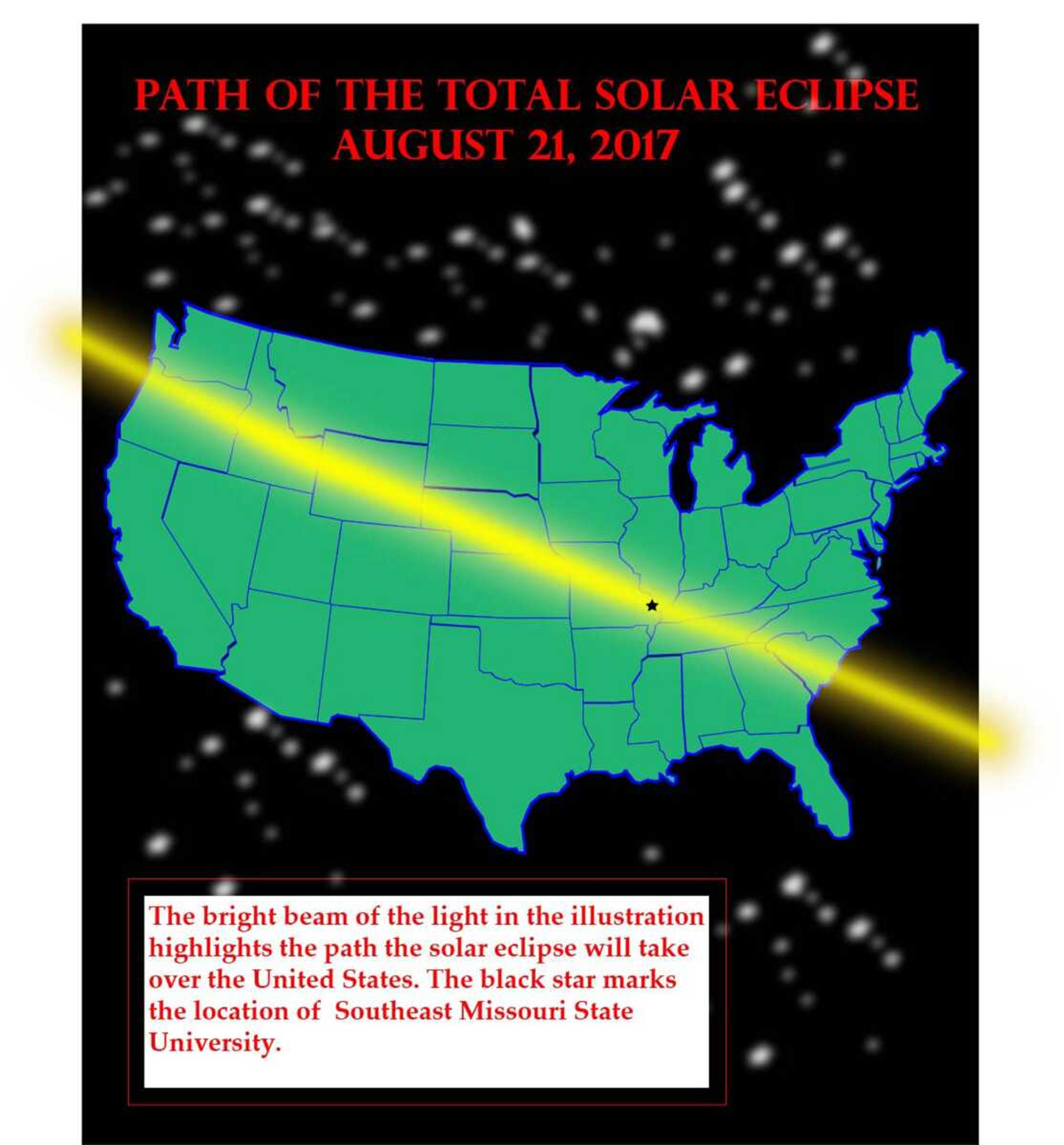The Southeast Missouri and Southern Illinois regions are considered "the crossroad" of a duo of total solar eclipses spanning across North America in 2017 and 2024.
The first eclipse will occur in Cape Girardeau this summer at 1:20:21 p.m. Aug. 21 then will happen again in seven years.
Most of the Cape Girardeau region will see full totality for a minute and 45 seconds. Regional places such as Carbondale, Illinois, and Perryville, Missouri, will see about two and a half minutes of totality.
A total solar eclipse occurs when the moon passes between the earth and the sun. Total solar eclipses have been called a "cosmic coincidence" by Dr. Margaret Hill, a physics professor at Southeast Missouri State University.
"The sun's diameter is 400 times larger than the moon, but the sun is about 400 times farther away from us than the moon is," Hill said. "So in the sky they appear exactly the same size."
When the moon crosses over the sky, it completely blocks the brightness of the sun and allows viewers to see the atmosphere of the sun; something that is generally unseen by mankind.
This phenomenon will occur twice in seven years in Cape Girardeau. There has not been a total solar eclipse to cross the United States since 1979.
In light of the rare occurrence, Southeast Missouri State University is conducting a series of events and continuing education events to prepare and educate the community.
Hill, along with another Southeast professor Dr. Michael Rodgers, is part of a Citizen CAPE project which, alongside students, will contribute to making a 90-minute video from a series of 60 telescopes spanned across the United States.
This video will show the evolution of the total solar eclipse and the change in atmosphere of the sun.
"You'll be able to look up and see the solar corona. It will look like streaky rays out of the sun that you normally can't see," Hill said. "A single observer wouldn't be able to see the change within the corona; however, if you put it together in a movie, you'll be able to see the changes."
This data will be available to the public.
There are also Safe Solar viewing classes, community astronomy lessons about what is viewable in the night sky in Cape Girardeau, and a public "Astronomy 101" lecture all about total solar eclipses planned.
To learn more about the university's community events, go to eclipse.semo.edu.






